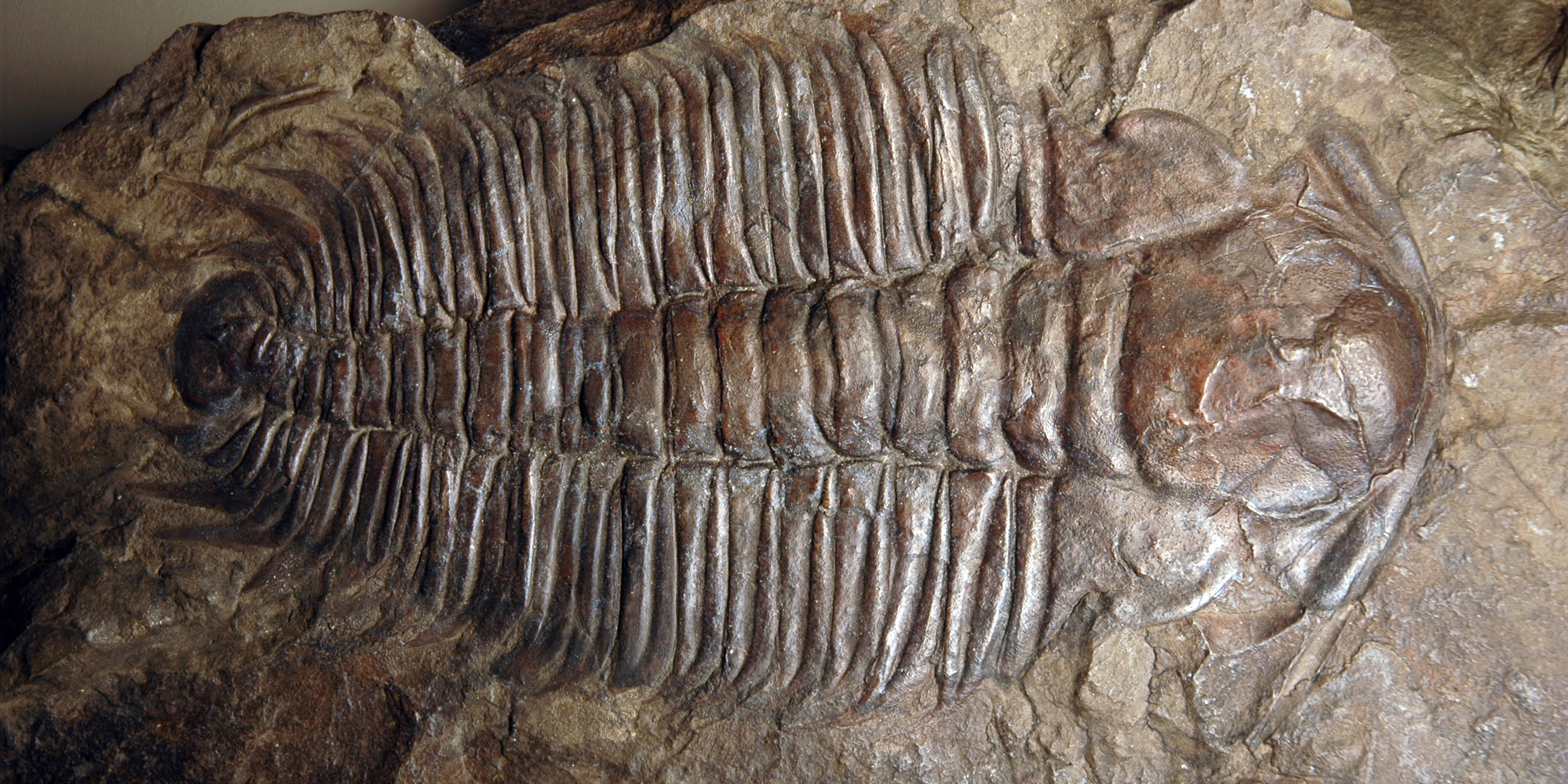Originally published 7 April 1986
Boston, Charlotte, N.C., St. John’s, Nova Scotia, Wexford, Ireland, and Holyhead, Wales, have something in common. All are situated on rocks that contain the fossils of a certain extinct trilobite, or marine arthropod, that are found nowhere else.
The fossil trilobite we share — one of thousands of species of the ancient crustacean-like sea creatures — is called Paradoxides. For a long time Paradoxides was a real paradox. How did it come to be so haphazardly dispersed, in chunks of continental rock that have no obvious affinity or connections? The answer has come at last — from Alaska!
In the 1970s, geologists working in Alaska discovered that the entire state was made up of slabs of continental crust that appear to have been slapped together willy-nilly over the past 180 million years. A study of the fossil magnetism in the rocks indicated that many of the slabs of crust had their origin far to the south.
It soon became apparent that these patchwork pieces of continental crust — called “exotic” or “suspect” terranes — came to Alaska riding the moving plates that make up the Earth’s dynamic surface. They slipped north and become affixed to Alaska in the same way that Southern California is even now sliding northward on the San Andreas Fault. In 50 million years Southern California will become one more of the exotic terranes of Alaska.
A collage of terranes
One well-studied Alaskan terrane is called Wrangellia. It was once a microcontinent that lay south of the equator. Riding on a drifting plate, it moved north and crashed into Oregon 70 million years ago. Shearing and further drift carried slivers of Wrangellia as far to the northwest as the Wrangell Mountains of Alaska. Pieces of that ancient microcontinent are now scattered all along the mountains of the American Northwest.
Wragnellia is not unique. The entire western coast of North America is a collage of exotic or suspect terranes — oceanic ridges, volcanic islands, chunks of old continents, ocean-floor sediments — that have been plastered onto the growing continent layer by layer as the plates of the earth’s surface slip and slide.
In recent years, Eastern geologists have picked up the idea of exotic terranes and have begun to take a fresh look at the rocks of New England.
For a long time, the standard story of New England’s past involved the collision of Europe and Africa with North America between 450 and 250 million years ago. The collision crumpled the rocks of New England and raised the ancestral Appalachian Mountains.
Now it appears that various terranes of an exotic origin got caught in the crunch when the continents collided. For example, all of southeastern New England is a collage of crustal fragments that were welded together when Europe and Africa collided with North America.
The identity remains
Boston lies on one of those crustal fragments, called Avalonia because of its likeness to the Avalon Peninsula of Nova Scotia. There is some controversial magnetic evidence that Avalonia drifted to its present position from a thousand miles further south. It may have been a microcontinent that moved north, like Wragnellia in the west.
Fragments of Avalonia were plastered onto North America about 400 million years ago, in the Carolinas and New England. Other parts found their way to Nova Scotia, Ireland, and Britain. And with all of them went the fossils of Paradoxides. Subsequently, the rocks of Avalonia were crunched and faulted, blasted by volcanoes and overlaid by sediments, but they have retained an identity that is different from their neighbors.
Part of the Avalonian identity are the fossils of Paradoxides, a creature that lived long ago in the waters of a sea that no longer exists. Paradoxides has been found in the quarries of Quincy and Braintree, and in the rocks of Ireland and Britain 2000 miles across the Atlantic. They are the badge of a common past in the shattered terrane of Avalonia.
Nature is full of paradoxes. It is the business of science to resolve them. The resolution usually involves seeing connections where none were seen before. Out of Alaska came new ideas about how continents grow, and suddenly the paradox of Paradoxides makes perfect sense.



